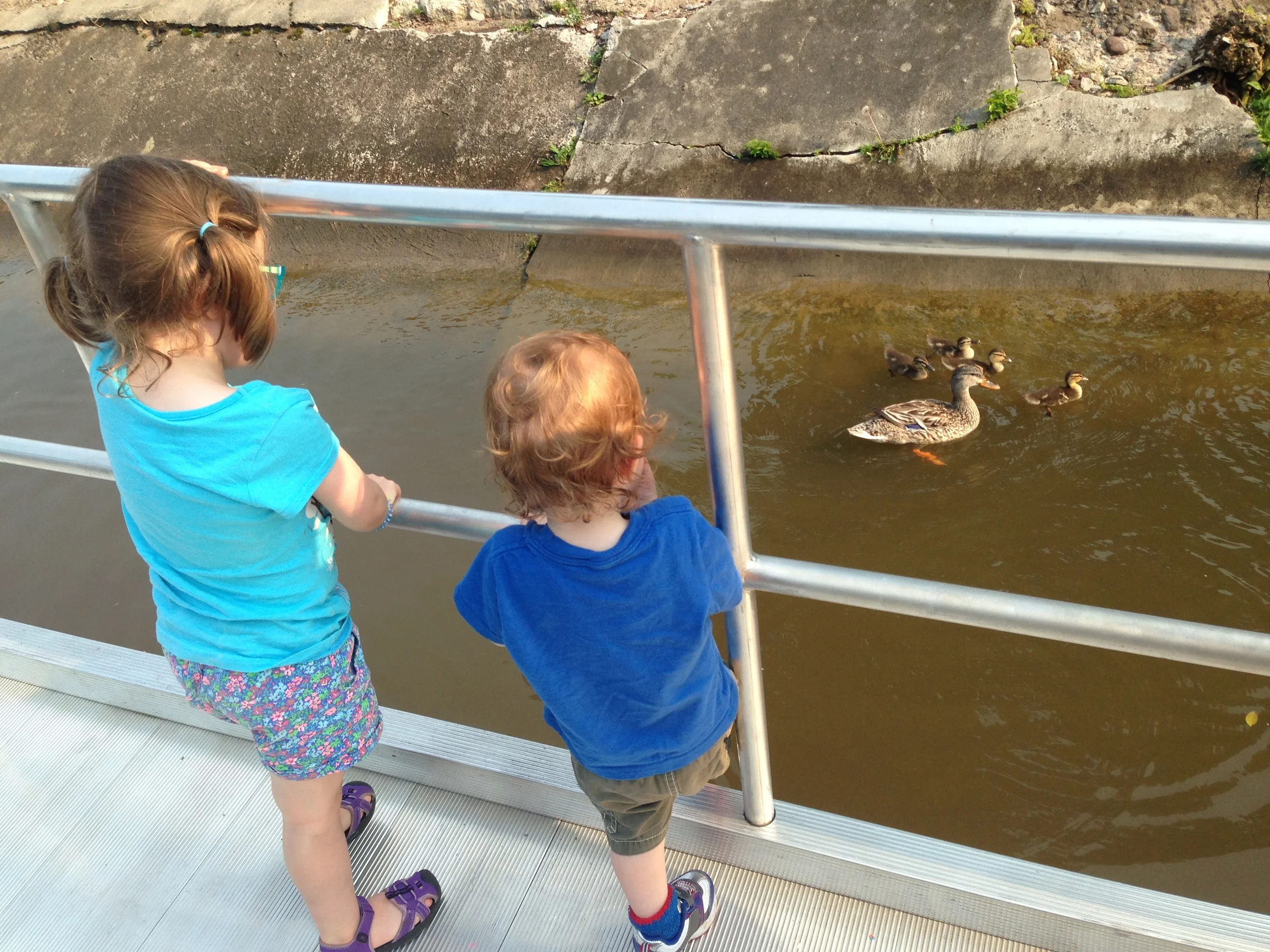Last week I posted about Bedtime Routines. I wanted to share an accompanying product review of something I have and use daily in my home, along with some ideas on how I use it to improve my kid's sleep.
Sleep can be challenging at different stages of development for a variety of reasons. Sleep can also be a sensitive subject for caregivers and healthcare providers alike when it comes to improving the onset (how long does it take to fall asleep) and increasing the duration (how long do they stay in bed asleep). At the end of the day, we all need sleep to function, so I’ve talked about it often with my friends and with families I have worked with over the years.
So...my cherubic first born child learned to sleep through the night at a young age. This is something we took relatively for granted until our second child arrived 22 months later. Just about the time our 2.5 year old transitioned to her big girl bed, she started developing the fabulous habits of A) getting in and out of her bed repeatedly and B) waking up too early. By my math, she was losing anywhere from 60 to 120 minutes of sleep on the front and back ends.
We needed to shore this issue up in a hurry since it was ratcheting up the household stress.
Like most things in my life, my Better Half deserves a lot of the credit. She read about this product, we purchased it, and had it all set to go atop the dresser in our daughter’s bedroom:
Here’s what the Teach Me Time Clock can do:
- Tell time
- Work as a traditional alarm
- Provide touch-button voice-over to speak actual time
- Serve as a nightlight
- Change colors at different times (this is the key ingredient).
- Here are our current settings:
- 7:30pm - soft yellow light comes on (serving as a nightlight)
- 8:00pm - soft yellow light continues on (time for bed)
- 6:45am - soft green light comes on (indicating time to get up)
- 8:00am - soft green light turns off (nobody is asleep at this time...)
So our daughter used to wake up around 6:30am, but was now waking up at 5:30am. She used to go to bed around 8pm with little fuss, but now was getting up and down until close to 9pm.
This is what we needed to do:
- Talk about the clock to her, the colors, and what she could earn for following the rules
- Identify a strong motivator soon after the light changes (morning tv show)
- Tell her what she would get for staying in bed until the light turned green (tv show)
The careful reader will likely notice that I have said nothing about getting her to stay in bed in the evening without getting up and down a bunch. I believe the the venerable Sun Tzu put it best when he said, in different words, “never fight a war on two fronts.” Sage advice here.
It would’ve been amazing if this took only one evening to do the trick. Of course, it did not.
What we needed to do was set the clock to 5:45am (close to her new 5:30am awake routine) and then gradually move the time toward our 6:30am goal in 10-15 minute increments over a few weeks. In addition, she would often wake at 5:30am, come get one of us, and then want to go watch her tv show. I would take her back to her room, lay her back in bed, and then lay with her until it turned green. I praised her to holy heck, got her dressed, and took her to tv time.
Then we worked on having her lay by herself until the light turned green. Then once this new behavior of laying in bed on her own until the light turn green appeared firmly established, we moved the time forward. This would often reset the level of support back to her needing to be taken back to bed, me laying beside her, then fading my physical presence, and her staying in her bed on her own. Then we’d move the clock forward another increment toward our goal.
Green light means time to get out of bed. "I slept until the light turned green" - parenting win!
What happened if she refused to stay in bed until the light turned green? This is where we would "ride the lightning."
She just didn’t get tv time that morning. And yep, it was not fun for either party.
But she got the hint relatively quickly because we also were not doing tv time in the evening, so this increased the reinforcement value of tv time.
This is one of those parenting battles where I feel like we fought the good fight and won. It wasn’t a one week or even a one month slam dunk, silver bullet sort of deal for us or her. But I do think this alarm clock provided a nice level of cuing and support that we still use with her.
Now we are preparing to transition our son to a big boy bed and will be ordering a second Teach Me Time Clock soon.








